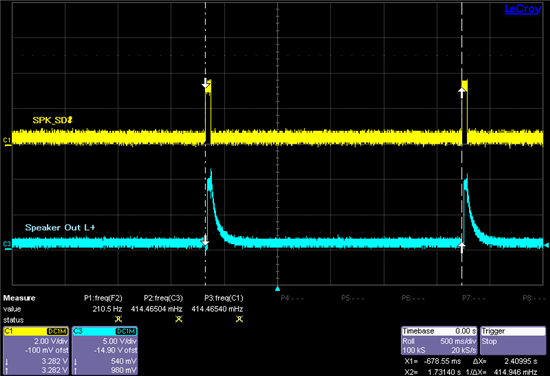Hi, my customer has questions in case of connecting SPK_FAULT pin and SPK_SD pin of TAS5760MD as below.
Case 1. When the below cases happened, SPK_SD was toggled automatically.
Is it a nomal operation? Why is SPK_FAULT not latched?
- SPK_OUTB- and SPK_OUTB+ are shorted.
- SPK_OUTB+ and SPK_OUTA+ are shorted.
- SPK_OUTB- or SPK_OUTB+ is shorted to GND. 
Case 2. When the below cases happened, SPK_SD was not set to low, and TAS5760MD was operating
continuously uner the condition that an input frequency and level of both channels were the same.
- SPK_OUTB+ and SPK_OUTA- are shorted.
- SPK_OUTA+ and SPK_OUTB- are shorted.
But when an input frequency or input level between channels was different, Case 1 was occurred.
Why does not TAS5760MD detect short condition?
There is an additional question about case1.
When SPK_OUTB- and SPK_OUTB+ are shorted and SPK_SD is returned from low to high,
PVDD/AVDD current flows for a moment.
But when SPK_OUT is shorted to GND or PVDD/AVDD, PVDD/AVDD current does not flow.
Why such differences occur?
Regards,
Toshi

